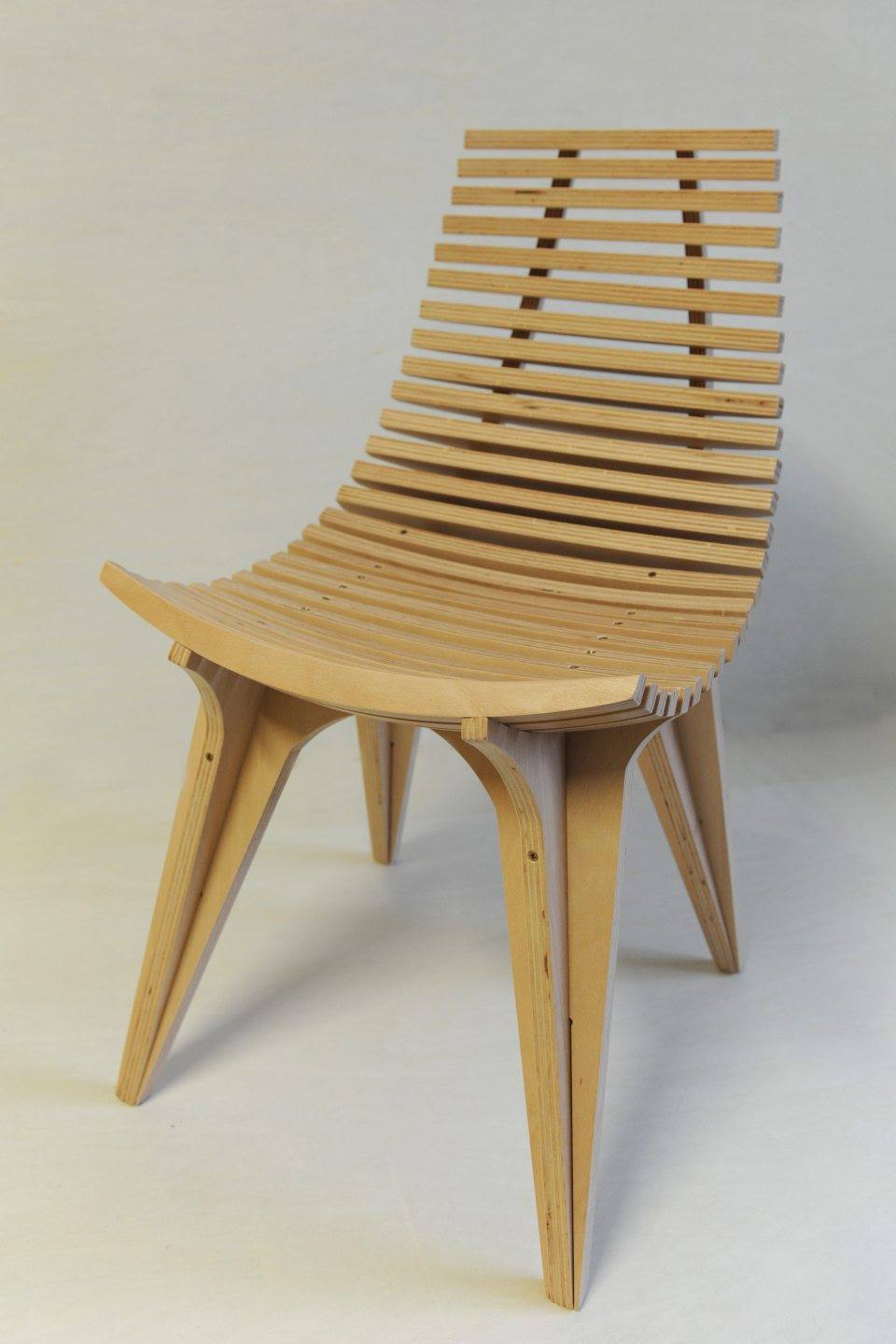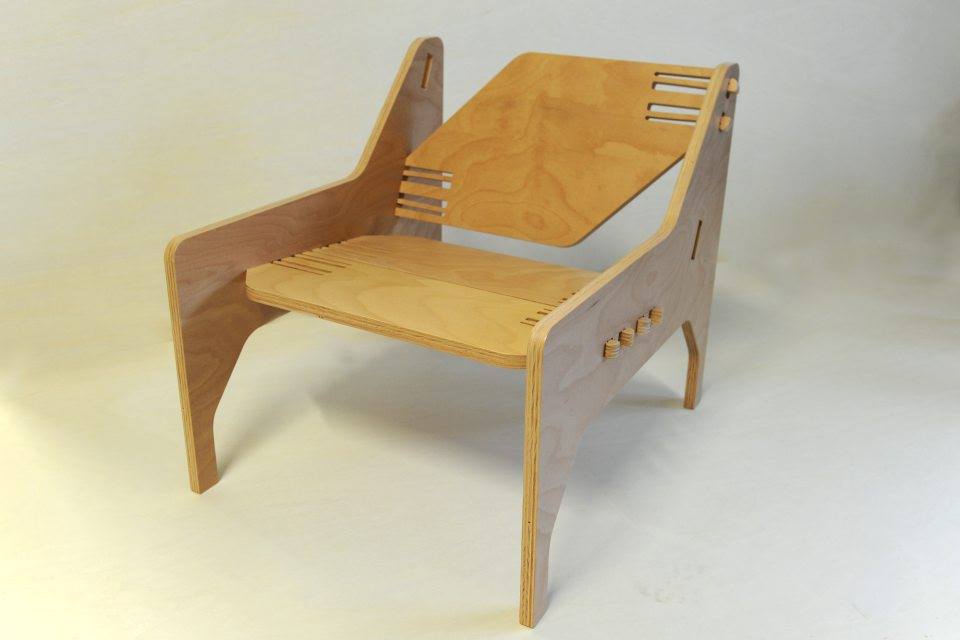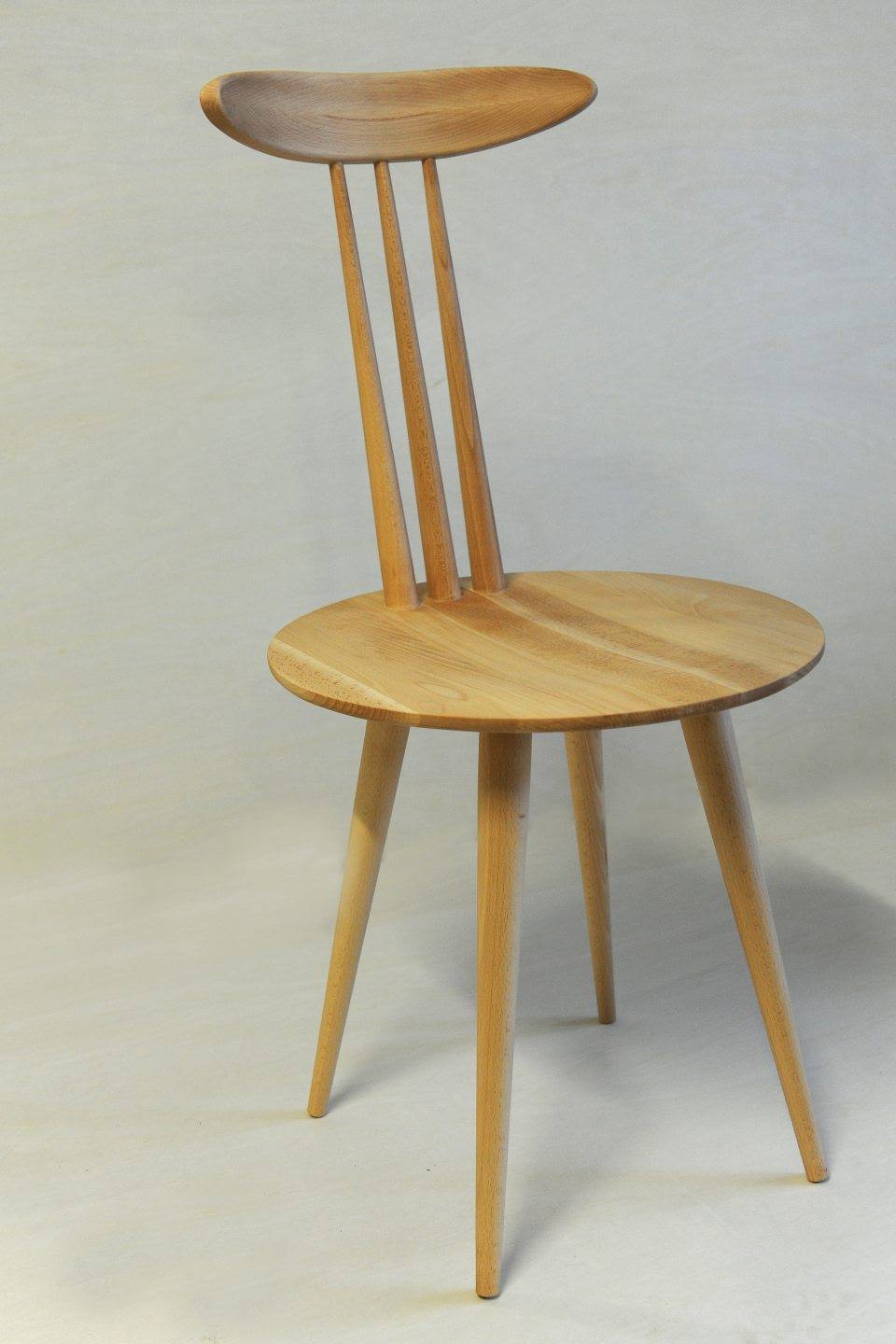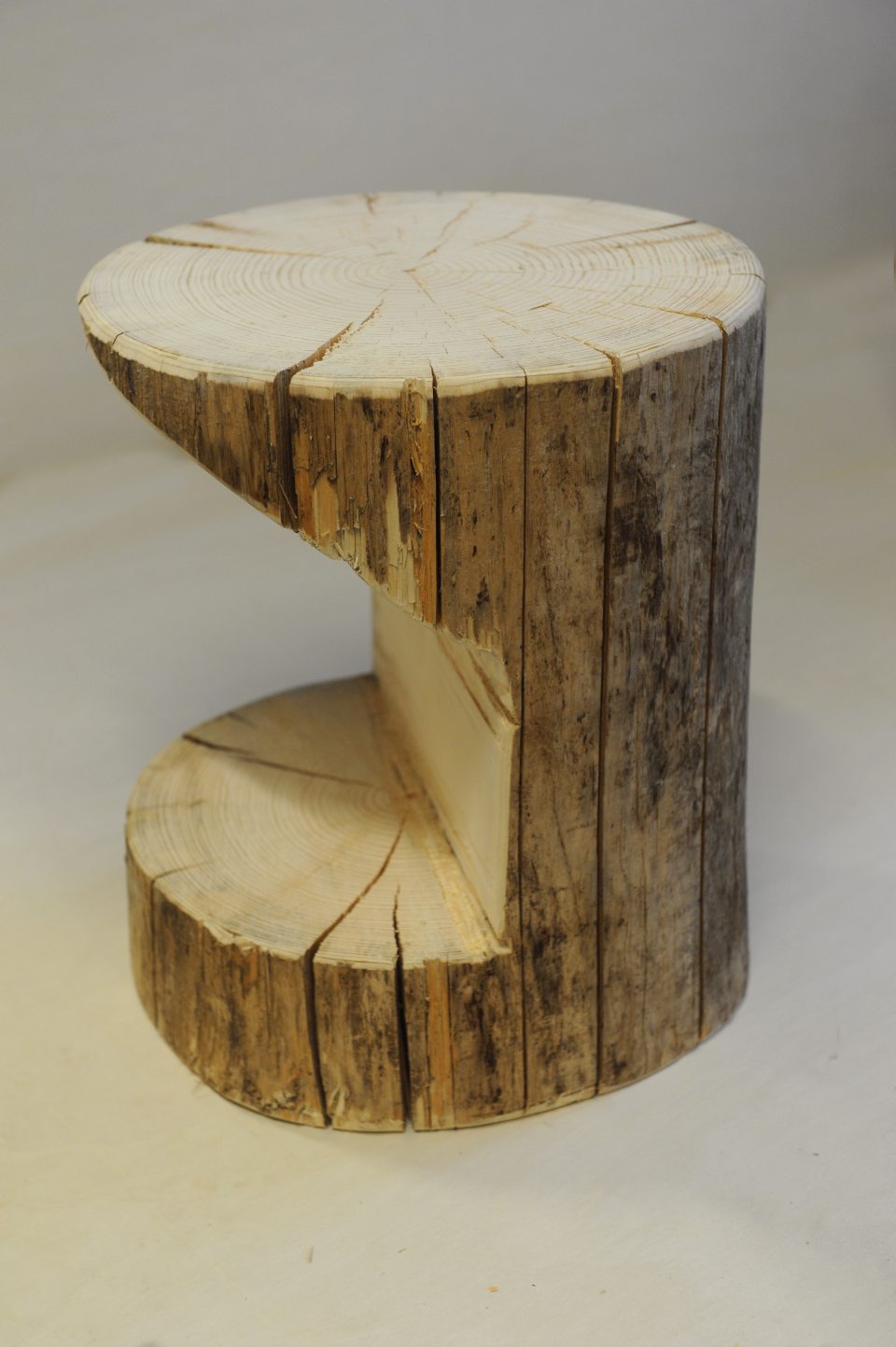Primal chair - 2015

1ST PLACE: TADEJA VIDONI, FRAME CHAIR, SLOVENIA
The components of the Frame Chair are designed in a way that offers a rational use of material. The parts that resemble a skeleton are cut out of a 20 mm thick plate measuring 120x140 cm. The construction consists of 26 parts of the seat frame. As a composite, they are arranged on two transverse parts, which together form the legs and backrest.
The individual elements and the chair itself are pleasantly anatomically arranged and invite you to sit comfortably and ergonomically. Assembling the stand is done by simply inserting the elements into the basic frame, which requires neither screwing nor gluing.

2ND PLACE: NOEL FLANNERY, CHAIR, IRELAND
The author transposes the rather conventional and well-known shape of the chair into a composite of five components without joining agents, glue, screws and the like. Everything is designed on 18 mm thick plywood. The individual pieces, cut with CNC technology, are interlaced with six self-locking ties and assembled into an object of known purpose.
Great precision is required, which CNC technology, at least in principle, enables. The proposal for this chair or armchair provides for a rational cutting of plywood into elements. These combine into a box-like shape, which is already well-known in the world of chair design (Stol's UNI and Futura program by Prof. Nik Kralja). The ingeniously designed joint provides for the pinning of individual pieces, whereby the wood in these joints acts as a snap spring. The final presentation assumes, so we assume, still meaningful padding.

3RD PLACE: META MENCINGER, GOZDNI SADEZ, SLOVENIA
The author described her proposal in a very poetic and original way as "a tribute to the mysterious intertwinings, threads hidden from the eyes, without which there would be no forest, trees and wood - fungi and their hyphae." They represent generation and reproduction, when they accelerate the breakdown of organic compounds in the soil into compounds that trees need for their growth, and in the form of mycorrhizae, their indispensable cooperation with tree roots. Mostly invisible to our eyes, their fruiting bodies appear in the form of fleshy mushrooms in warm, humid weather."
The "Forest fruit" chair combines the strength of wood with a graceful, gentle form, which is inspired by the magical world of fungi, which is always present in the forest. Among all the contributions, the proposal is almost the only one that puts the aesthetics or the beauty aspect of the product in the foreground. The manufacturing method is known especially from Scandinavian carpentry production. Technologically, so-called "colonial" chairs were sometimes produced in our country. The legs of the chair and the bars that make up the backrest are stuck into the relatively thick seat surface. The elegant "Fruit of the Forest" is clearly inspired by the thin fungal hyphae, as well as the slender trunks of the dogwood. The simple elegance of the chair was decisive for awarding the award.

SPECIAL JURY RECOGNITION: NATALIJA OTONIČAR, COK, SLOVENIA

